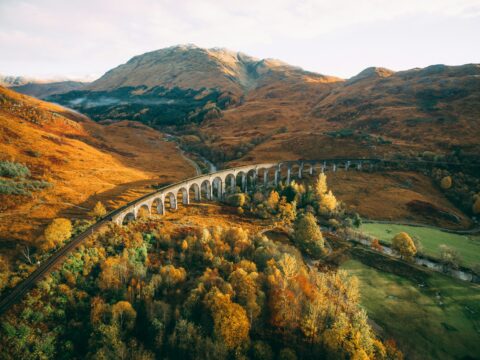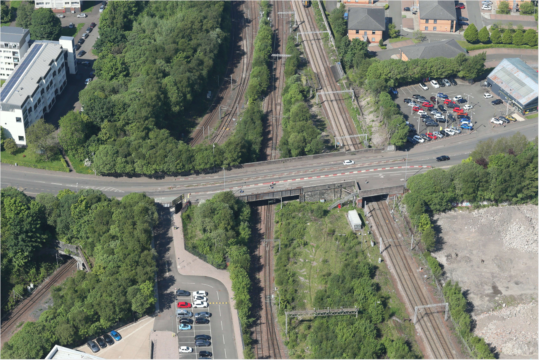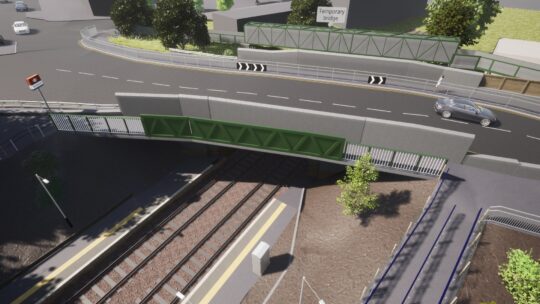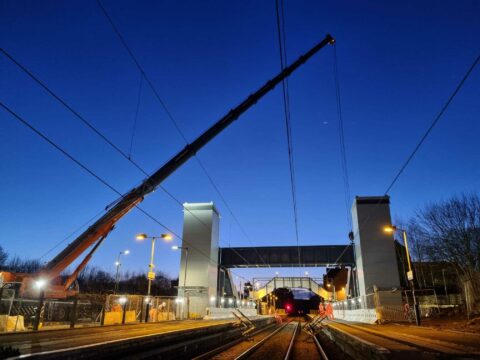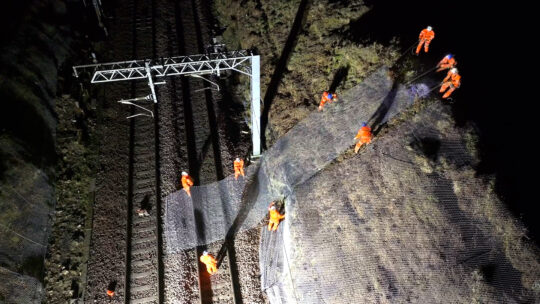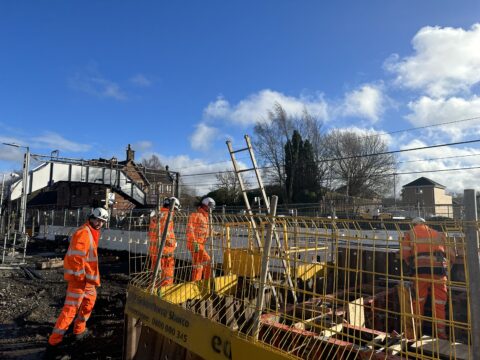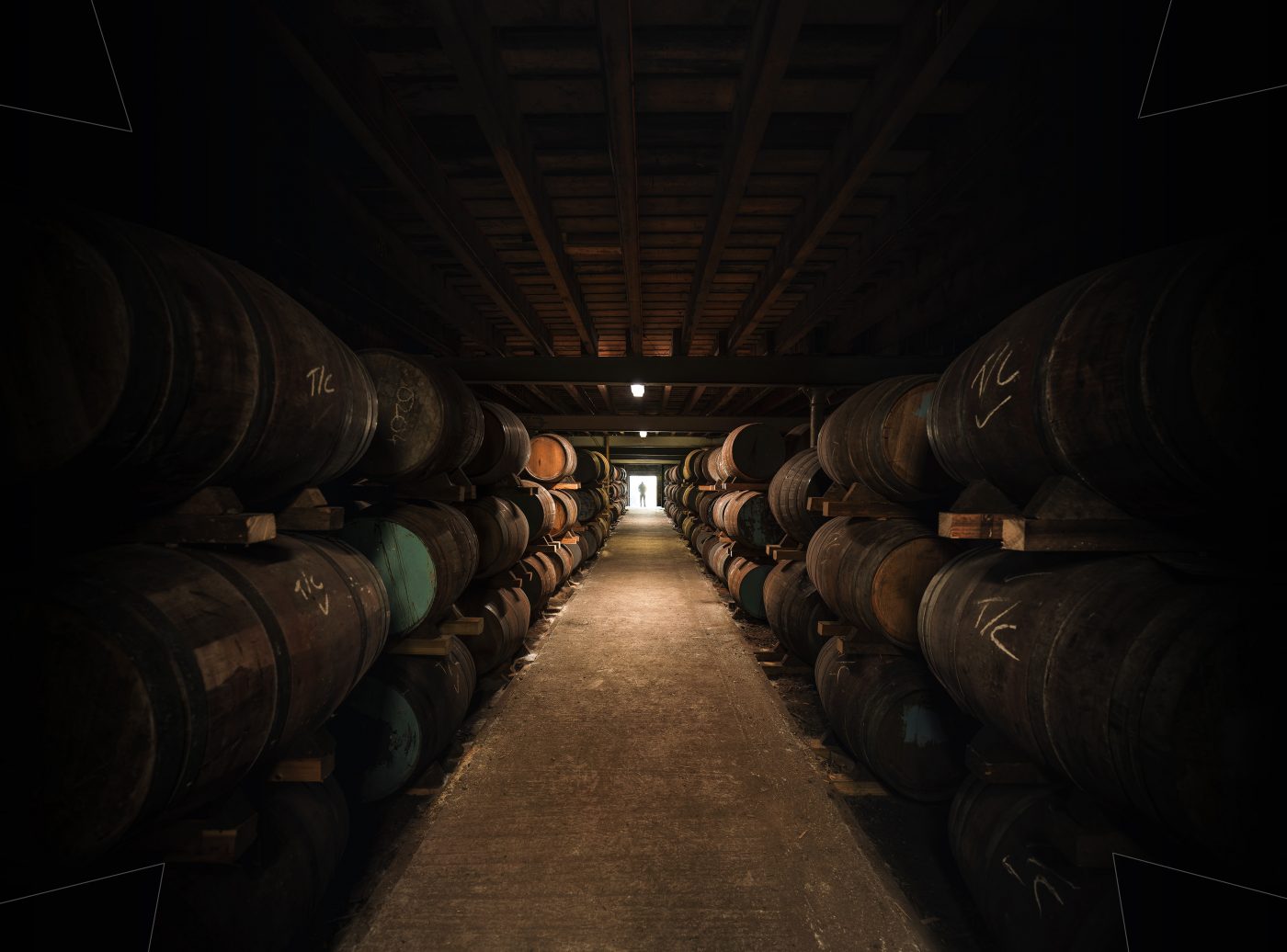
Sustainability
Sustainability - at the centre of all we do
A low emission railway
-
Sustainable travel to stations
Our vision
We want to help the journeys our passengers make between their local neighbourhoods and the station to be as healthy and sustainable as possible. No rail network exists in isolation, people must travel to get on board. Every train journey begins at a front door and ends at the destination.
The ambition of Scotland’s Railway is to treble passenger numbers across its network but not increase short car trips to stations. We therefore have a clear vision to enable active, and sustainable travel to and from the station door.
Unless it is easy, convenient, and safe for potential passengers to get to and from their local station, there is no evidence they will switch how they travel.
How we deliver it
With the able assistance of John Lauder - former Deputy CEO at Sustrans and now leading the Railway for Everyone programme here at Scotland's Railway - we have developed a strategic plan to help make it easy, convenient, and safe for most passengers to get to and from our stations without a car. Our strategy was developed across the public and private sectors and John engaged with all stakeholders. It is now live and you can access our Sustainable Travel to Stations Strategy here, the easy read version is available here and the brand new practitioner's guide here.
The practitioner's guide is designed for those working in local government, regional planning and transport, as well as community groups and the rail industry.
It is designed to help with assessing, planning, and delivering integrated railway stations. It is practical, non-prescriptive, and will help bring about meaningful dialogue for those considering stations, transport planning, and how Scotland moves towards an integrated transport system.
This guide will help you:
- consider how a rail station can better integrate into the community it serves
- re-design an existing station, or design a new facility from scratch
- consider how to make sure a station is accessible to active and sustainable travellers
- if you are proposing a development near to a rail line, an existing station, or you are planning a new facility, and want it better embedded into its neighbourhood
Asides from communities in rural areas, and considering the needs of essential car drivers, the focus for rail is on making it as easy as possible to get to a station on foot, by wheelchair or mobility scooter, by bike, and through sustainable transport - the bus, community owned vehicles, etc.
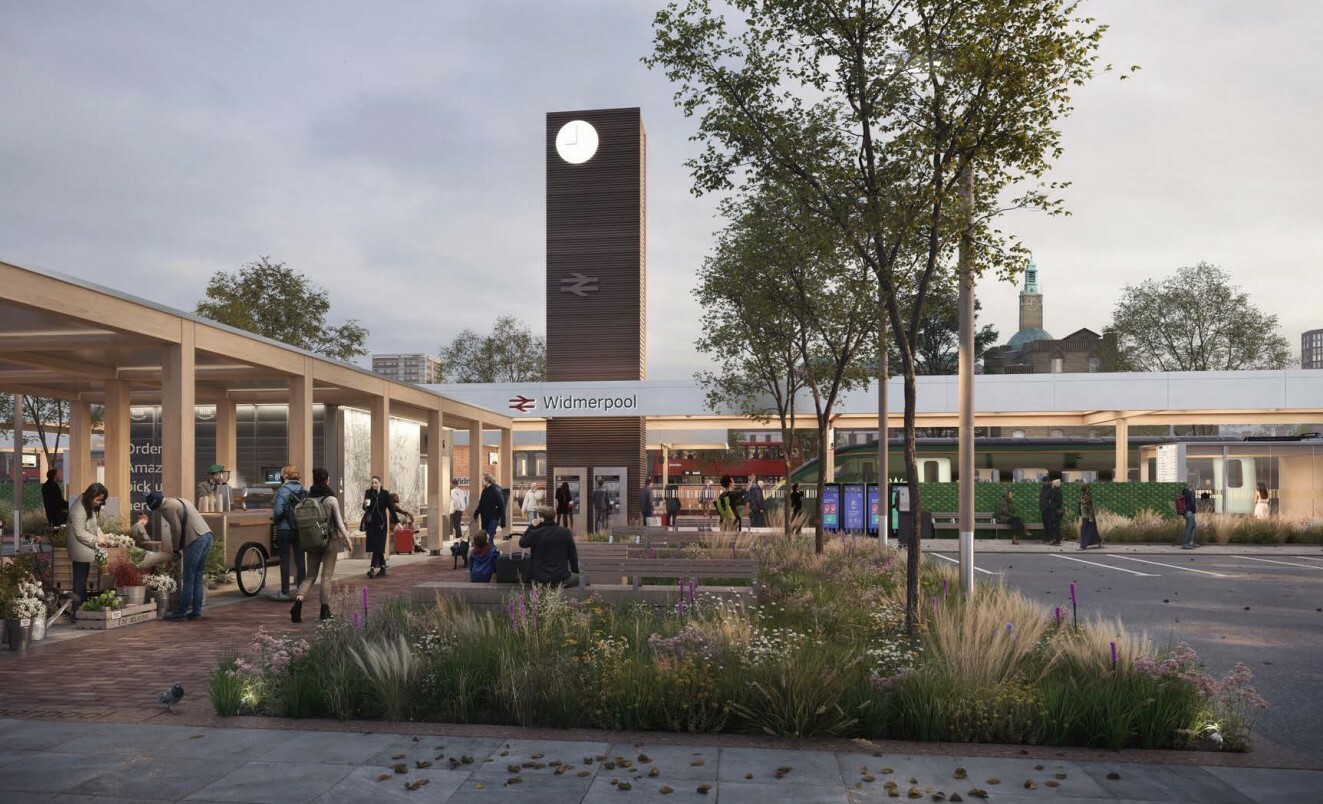
Artist impression of an accessible station We fully recognise that in rural Scotland there is a need to facilitate parking for those driving to stations, just as we recognise the needs of disabled people who drive, or who rely on a lift or a bus or taxi. In addition, we want to ensure that bus services link to local stations.
We also want our passengers to enjoy stations that are fully accessible, easily navigated and with step free access.
Opportunity
For local authorities, working collaboratively with Scotland’s Railway in developing new, and re-developing existing stations to properly integrate into communities will help improve their neighbourhoods and towns. In addition, bus operators have the potential to carry more passengers where services align and integrate with stations.
Other
Read the report on the Public Health Benefits of Active Travel to Train Stations in Scotland.
Scotland’s Railway is working on an ambitious programme to decarbonise passenger services by 2035.
This will help us to deliver the Scottish Government’s ambition to reduce driven car kilometres by 20 percent, by 2030[1].
[1] A route map to achieve a 20 per cent reduction in car kilometres by 2030 | Transport Scotland
-
Overview of our sustainability strategy
Sustainability is hugely important for Scotland’s Railway. There is no question that the way the railway currently operates has to change. Issues like climate change are impacting the railway in a very significant way, putting our assets – and lives – at risk.
We’re painfully aware of the consequences of climate change. More frequent and more severe weather events wreak havoc on our infrastructure through flooding, landslips and extreme temperatures. The tragedy at Stonehaven in 2020 was a heart-breaking example of what can happen because of climate change. The changes in weather systems are here to stay and are likely to get worse, so we need to adapt the railway to be more resilient in the face of extreme weather.
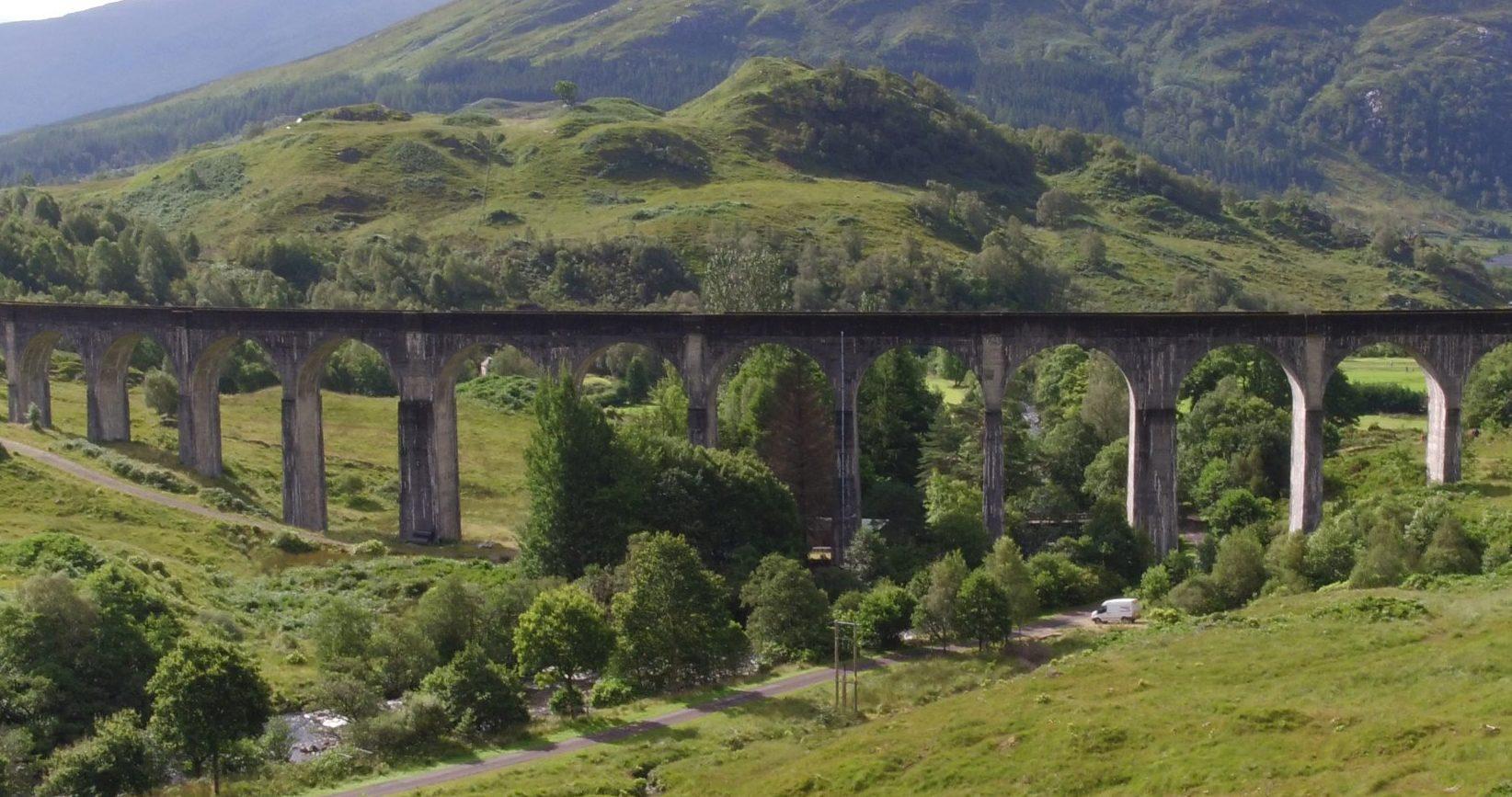
We know that the way to tackle climate change is to reduce carbon emissions. Rail has a massive part to play - not only in decarbonising the railway itself, but also to shift mass transport of people and goods away from more polluting modes such as road and aviation, so that the whole of Scotland can reduce overall emissions. Huge changes are needed to achieve net zero emissions, not just to the trains themselves but to our buildings, our operations and to the way that we build new infrastructure – so that we are cutting out carbon right throughout the railway system.
But of course, there are other aspects to sustainability which are just as important. We need to be kinder, and better protect the beautiful landscape that Scotland’s Railway runs through. The biodiversity of the land around the railway is vitally important and it is not acceptable that we inflict damage because of our operations. We need to change the way that we carry out our work so that we leave an enhanced natural habitat once we have finished.
Finally, but not least, we need to be better for the people that we serve and the people we employ. Improving air quality, reducing noise and nuisance, and doing good in the communities that we serve are things that we are striving to do better.
-
Decarbonising our rail service
Rail is already a low-carbon form of transport, far more carbon-friendly than road or air travel. However, we know that we can’t rest on our laurels and that any level of harmful greenhouse gas emissions is too much. The Scottish Government has adopted stretching targets for carbon reduction right across the nation, and we have a vital role to play in that transition – achieving net zero for rail and also contributing to the achievement of net zero emissions for the whole country. A decarbonised rail service and the right policy levers will shift the movement of passengers and goods from road to rail, getting Scotland to net zero more quickly.
The good news is that we know that decarbonising passenger rail services is possible. We have been developing detailed plans the best way to do this, through programmes of electrification and the development of alternative-fuels for train movements, such as hydrogen and battery trains.
Electrification of major Scottish routes will undoubtedly reduce the carbon impact of the services, however electricity from the grid still has a carbon impact. So while we are working to reduce the carbon impact of the electricity that we buy we are investigating ways to generate and purchase enough renewable energy - generated here in Scotland - to serve all of our needs. And we’re also looking at our land assets to see how we can put unused land to better use by developing solar farms and wind turbines which will directly feed our buildings and other assets.
We also need to minimise the carbon impact of building the new electrification assets, and other infrastructure projects. Designing out carbon throughout the whole of a project lifecycle will be a major focus for us, so that carbon emissions are minimised throughout construction, in the materials that are used, during serviceable lifetime, and at decomissioning. This thinking is linked to our circular economy approach, and we have a workstream dedicated to reducing capital carbon.
In our efforts to decarbonise our rail service, we make the following commitments.
Publicise traction decarbonisation aspirations for passenger and freight services internally and externally
Establish a pipeline of enhancement projects to reflect Transport Scotland’s Decarbonisation Strategy
Influence traction energy use through Driver Advisory Systems, fuel additives and reducing idling
Achieve at least 38.5% reduction against baseline carbon emissions *
Develop an energy delivery masterplan for Scotland's Railway, including requirements for future battery and hydrogen train services
Conduct development work to enable direct renewable energy connection to the traction network
Deliver funded Phase 1 Decarbonisation pipeline
-
Decarbonisation - Scotland's Railway
Our Vision: Conduct our business in a way that does not contribute to global warming and climate change, striving for net zero carbon operations by 2045
Alongside operating rail services, Scotland’s Railway undertakes a wide range of business activities. Operating, maintaining, and developing Scotland’s Railway’s infrastructure is very energy-consuming, making us one of the largest purchasers and consumers of energy in the country. Energy is required to operate lighting and heating in our estate (e.g. offices, depots and stations), to operate critical infrastructure such as signalling and level crossings, and to operate our road fleet vehicles and the generators that support maintenance and construction works. Therefore, the rail industry has an important role to play in reducing the energy consumed by and the carbon emissions coming from these operational activities.
Energy is at the core of providing passengers and freight with a safe and reliable service. Scotland’s Railway face the challenge of operating the day-to-day complex rail network while gradually reducing our energy consumption and moving to a net-zero carbon scenario. We need to do this to tackle climate change and to meet the Scottish Government targets set by the Climate Change (Emissions Reduction Targets) (Scotland) Act 2019 of reducing greenhouse gas emissions to net-zero by 2045.
We will work collaboratively across all departments of Scotland’s Railway to identify and roll out energy efficiency measures across our estate, such as transitioning away from gas boilers, converting to LED lighting, and better understanding and managing our energy consumption data thanks to sub-metering installation. We will transition our road fleet to zero emission vehicles, and our diesel-fuelled plant machinery to emission-free plant.
We will work with our workforce to emphasise the importance of individual action in reducing energy consumption and carbon emissions through behaviour change and awareness-raising initiatives, to create a culture that encourages continuous innovation and improvement.
To meet the 2045 net-zero carbon emission target and the anticipated increased demand for electricity, we will diversify our electricity sources by introducing renewable energy technology into our energy portfolio. Where we don’t yet have the technology to reduce residual emissions, we will look at carbon offsetting opportunities within and outwith our land.
Our delivery plan commits us to -
Collate a holistic non-traction energy Projects & Opportunities Register for Scotland’s Railway
Trial innovations in reducing non-traction energy, e.g. Falkirk High Zero Carbon Station
Publish Scotland's Railway's pathway to Net Zero
Establish a Scotland's Railway strategy for zero-emission vehicle road fleet and support infrastructure
Publish results of trials to include additives to road and rail fleet fuels
Conduct joint trial of intelligent LED lighting and share learnings
Establish a carbon off-setting strategy for Scotland’s Railway
-
Reducing the carbon that's embedded in our infrastructure
Our Vision : Minimise carbon in our infrastructure development and reduce the whole-life carbon impact of all new rail projects in Scotland
When we think about carbon emissions we usually think about emissions from the energy that we use or the cars that we drive. The emissions that aren’t talked about as frequently are those that are as a result of the construction of our infrastructure assets – often referred to as ‘embedded’ carbon. This can be from the manufacture and transportation of the materials we use in construction or the work practices used during the construction itself.
We need to think about the whole lifecycle of our assets – harmful emissions occur throughout the construction, operational use and the decommissioning of assets.
way we design, build, use and dispose of our infrastructure assets.
This is shown below, using the example of the full lifecycle of a building.

To tackle climate change, we know that we need to decarbonise and do things in a very different way. More than saving energy and switching to renewable power sources, we need to minimise the carbon impact of everything that we do.
A UK government-led Infrastructure Carbon Review (ICR) estimated that national infrastructure accounts for over half of total UK emissions of carbon and other greenhouse gases. 30% of infrastructure emissions are directly attributable to the construction, operation, maintenance, and decommissioning of infrastructure. These emissions come under the direct control of infrastructure asset owners/managers and their supply chain.
As an industry, rail has a huge part to play in reducing whole of life carbon, so we are looking at how we can change the way we design, build, use and dispose of our infrastructure assets.
Our suppliers are vital in helping us remove carbon from our infrastructure projects. They have the skills and innovative techniques and materials that can enable us to build, use and decommission assets in a low-carbon way.
To reduce the carbon impact of our infrastructure, we will:
Establish baseline carbon emissions within Scotland’s Railway’s supply chain and set reduction targets
Engage our supply chain on achieving our vision for low carbon infrastructure
Embed sustainability and whole-life carbon thinking at the earliest stage of strategies and projects
Establish a baseline for whole life carbon in assets
Conduct carbon calculations of current electrification programme to better understand impacts
Conduct whole-life carbon assessments of all capital projects across Scotland’s Railway
Conduct carbon calculations of future planned decarbonisation workstreams
-
Improving Air Quality
Our Vision: We are aiming to improve the air quality in and around our railway; reducing emissions to enable our passengers, neighbours and employees to breathe cleaner air
Unfortunately, a lot of the essential work of Scotland's Railway creates emissions that have an impact on air quality and create some risk. This is due in large part to the operation of diesel trains on our network.
Air quality emissions have the potential to impact stations, depots, passengers, tenants, staff and communities.
To assess and develop our approach to managing and improving air quality, we have created the Air Quality Working Group with participants across Scotland’s Railway. This group has participated in a number of studies into air quality,
As a result of these studies, we understand that air quality is a risk and that as Scotland’s Railway we have made the following commitments to air quality in our new strategy:
Collaborate across Scotland’s Railway to conduct research and enable solutions to improve air quality, such as reducing train idling and trialling alternative fuels
Establish baseline air quality records at key Scottish stations
Develop air quality improvement plans for key Scottish stations
Improve air quality status in six key Scottish Stations
Map where dust suppression measures are not in place for plant, worksites and depots
Establish a plan for rolling out air quality improvements to all worksites and depots
Implement feasible improvement plan recommendations which fall within delivery plan timescales
-
Adapting to climate change
Our Vision: We will adapt Scotland’s Railway so that it is more resilient to the impacts of climate change, improving train performance and safety during extreme weather
Despite most of the developed nations making commitments to get to net zero, global emissions of greenhouse gases are still on the rise. While we aim to limit carbon as quickly as possible, the concentration of greenhouse gases in the atmosphere will continue to increase for the coming decades, and average global temperatures will climb.
As the climate heats up, it will bring with it all kinds of risks. From more frequent extreme weather events, like heatwaves, droughts or floods, to coastal erosion from rising sea levels. Climate change will affect everyone.
Here in Scotland, we are painfully aware of the risks that extreme weather from climate change can bring. The tragic derailment at Stonehaven in which two railway colleagues and a passenger lost their lives showed the stark risk of climate change, as a period of intense rainfall caused the landslip which derailed the train. We have pledged to learn lessons from this tragedy and tackle the challenge of managing rail infrastructure in the face of more frequent occurrences of extreme weather.
Adapting to climate change means taking action to prepare for and adjust to both the current effects of climate change and the predicted impacts in the future. Investment in infrastructure resilience work has almost doubled in the past decade, and new systems, technology, standards and practices have been introduced or updated - but we can do more.
Our Weather Resilience and Climate Change Adaptation Plan sets out the actions that we are already taking and have planned for the remainder of this control period. While we continue to implement the plan, we will do the groundwork for plans which will look much further ahead and will take into account a range different climate change projections.
Our plan will:
Improve monitoring and reporting and strive to reduce the number of days where service is affected by adverse and severe weather
Develop and publish ScotRail’s Climate Change Adaptation plan *
Make climate change adaptation data readily available to all stakeholders
Carry out climate change risk assessments and identify priority assets
Develop Weather Resilience & Climate Change Adaptation plan 2024-2029 **
Conclude implementation of Scotland’s Railway’s current WRaCCA plan
Establish 20-year Climate Change Adaptation strategy for Scotland's Railway
* Annual plan, franchise committed obligation
** Network Rail weather resilience plan for 2024-2029
-
Improving biodiversity
Our Vision : We look after nature and protect, maintain and enhance biodiversity across the railway landscape by 2035
Scotland’s Railway covers over 7,340 hectares of lineside estate. We have the potential to act as a vital wildlife corridor by offering connectivity between habitats that could help reverse an alarming trend of biodiversity loss in the UK.
The UK has the third highest rate of biodiversity loss in the western world. We want to take action to make sure we're protecting our environment and the vital animal habitats found across our network. We've committed to:
Publish the national biodiversity standard by end of 2021 and use the outputs to inform guidance to Scotland's Railway asset managers on the best habitat management interventions for biodiversity and train performance
Establish the biodiversity baseline, map all relevant data and make it available to our supply chain by 2024
Increase the ecological capability of Scotland's Railway and that of our supply chain by 2024
Achieve no net loss of biodiversity across the network by 2024 and net gain by 2035
Gain recognition as a leader in land management by 2030
We will pursue our target of no net loss of biodiversity in the following ways:
Promote national Biodiversity Standard NR_L2_ENV_122 and ensure compliance across all business units by January 2022.
Increase the track miles with viable survey data by March 2023.
Establish a monitoring and recording system which makes data easy to share with stakeholders by March 2022
Establish a process to undertake biodiversity calculations of all non-emergency work by March 2022
Publish a biodiversity action plan for Scotland's Railway by March 2023
Deliver a series of regional training and learning events that upskill relevant staff across Scotland's Railway by March 2022
Work with the SLUP to trial new, sustainable methods for managing the biodiversity of our lineside estate by March 2023
Establish a long-term Scotland's Railway Sustainable lineside strategy by March 2024
Deliver a community forest pilot scheme by October 2021
-
Operating in a circular economy
Our Vision: We will minimise waste and the use of materials - re-using, repurposing and redeploying products to conserve natural resources
When considering waste, what is it that you think about? Is it the materials that go straight into a skip or bin? That needs to be thought of as residual waste and the old practice, where goods or materials that we consume in a Produce – Use – Dispose model, is what is known as a Linear Economy system. Modern lifestyles are resulting in overconsumption of finite raw materials and if that practice continues to grow, at current rates, the economy will need the equivalent of almost three planet Earths’ resources. That isn’t sustainable.
Communities, economies and biodiversity at local and global levels are negatively impacted, through loss of habitat or land to extract raw materials and the impacts from processing those or construction. That’s important at many levels as loss of that natural capital results in loss of other, non-material benefits that drive economies, including recreational, educational or eco-tourism opportunities.
The consumption model also has overlapping impacts which can include carbon, etc. emissions during processing and transport; other pollution risks or demand for scarce resources, including water, etc.
In order to minimise those impacts and realise benefits, we need to think about the whole lifecycle of our assets and those materials. Re-use of end of life materials as part of construction would mitigate some of that resource demand. Examples of opportunities include re-use of demolition waste in local economies for new construction sites, or metals can be recovered and recycled to reduce raw materials demands and associated transport or processing impacts. These are referred to as “Secondary Materials”, which can be put back into production within an internal process or re-used by external parties, locally.
Critically, re-use of materials in this manner can be included at design or manufacture stages and that process is known as a “Circular Economy Approach”. Changes to planning and construction methods will contribute to realising how that approach may be applied which can be achieved through sustainable procurement practices and working collaboratively with suppliers.
Our Sustainability Strategy commits us to:
Establish external stakeholders’ group to promote sharing of materials
Enhance on-train recycling through better train specification and customer engagement
Improve waste reporting and provide a Scotland’s Railway waste dashboard
Set reduction targets based on holistic waste & recycling data
Continually encourage innovation by trialling new initiatives and engaging with our supply chain
Embed circular economy principles in early design or projects
Conduct material and waste management plans for all capital work
-
Improving social value
Our Vision: To enable thriving, connected and resilient communities and destinations that are great places to live, work and visit.
Over the years, Scotland’s Railway has placed greater emphasis on how we engage with the communities we serve. Clearly, this has been closely linked to our business objectives in relation to performance, safety and positive relationships with our stakeholders. However, greater emphasis has been placed on our moral obligations to devise and deliver a robust community engagement programme. This was epitomised during the early stages of the pandemic, when Scotland’s Railway’s response to our “Call to Arms” was emphatic with our workforce pulling together to support Scotland during unprecedented times – this demonstrated social value at its best and has subsequently resulted in Network Rail introducing a Social Value Framework which aligns to both the Sustainability Strategy 2021 (where Social Value is a key theme) and Scottish Governments National Transport Strategy 2021 (NTS2) national-transport-strategy.pdf which aims to deliver a transport system that is sustainable, inclusive, safe and accessible.
As a business, our social value priorities, ambitions, and goals are designed to identify and maximise positive impacts on people and manage or mitigate negative ones. It helps us to make business decisions that respond to local need and is aimed at teams, projects, and programmes whose work has the potential to cause material impacts on people – positive and negative, direct, and indirect – particularly lineside neighbours and local communities.
Social value management is about adding value not cost. It is a golden thread through many of the activities that represent ‘business as usual’ for Network Rail. By managing, measuring, monetising, and reporting our social value enables Scotland’s Railway to:
Better understand risk and opportunity associated with our activities and integrate that into decision-making
Demonstrate value added
Strengthen relationships and attract external funding
Enhance our reputation
Conversely, failure to manage social value risks adding cost through:
Legislative and regulatory breach (e.g. of Equality Act 2010)
Complaints and subsequent delay to operations or projects
Negative media coverage and reputational harm
Stranded assets.
-
Reducing our noise and nuisance
Our Vision: Minimise the noise and nuisance impact that the railway can have on neighbouring communities.
Constructing and maintaining the railway is a noisy and ongoing process. Nuisances and disturbances are primarily related to noise and vibration, artificial light, visual amenity, and traffic movements.
Scotland’s Railway undertake millions of pounds worth of investment and maintenance work every year. This can range from strategic long-term investments such as electrification projects, to emergency repair works, to routine maintenance and vegetation clearance. Work of all types and sizes can impact on lineside neighbours, therefore, we aim to take a holistic approach to the noise and nuisance management at our work sites. We want to do more and are working to identify further opportunities for improvement.
Scotland’s Railway aim to reduce the impact of noise and nuisance wherever possible. This includes activities such as controlling where equipment is placed on site, adjusting working hours, using localised noise barriers, and managing artificial light nuisance. However, noise levels vary depending on the circumstances – for example, open countryside allows noise to travel further than hills, frost makes the ground hard so it cannot absorb noise, and fog prevents noise from dispersing into the sky.
Scotland’s Railway will work closely with and listen to our lineside neighbours to minimise disturbances of the railway. We work hard to educate and train our employees and contractors to consider the potential impact that our work can have on our neighbours. We will further educate and enhance our workforce to reduce the impact of our work.
To help the railway industry manage the impact of noise and nuisance on lineside communities our Sustainability Strategy commits us to:
Assign accountability for our Noise and Nuisance Standards.
Work collaboratively to better understand how Scotland’s Railway can better respond to complaints.
Carry out behavioural changes activities to reduce idling.
Encourage innovative solutions to reduce the level noise and nuisance disturbance associated with our works.
Assess sites outlined in Transport Scotland’s Noise Action Plan and investigate the best approach to implementing mitigation measure if required.

